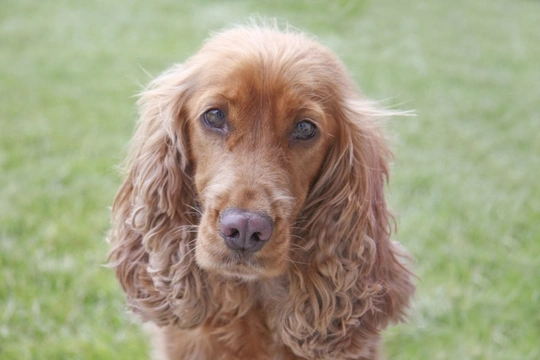
Dog Breeds Most at Risk of Developing Cherry Eye
Dogs have three eyelids on each eye with the third one being well hidden out of view when everything is healthy and normal. However, when an eye gets infected or damaged this third lid becomes a lot more evident, it swells up making a dog's eye watery and often looking quite sore. They are known as nictitating membranes and are found on the lower lid.
A Little Background
Third eyelids are there for a very good reason, they offer a lot more protection especially when dogs run through undergrowth which is important for working dogs. Having this protection means their corneas were less at risk of being damaged by any debris, but they also keep a dog's eyes nice and moist too. Their role is even more important because if ever eyes are damaged or an infection takes hold, the tissues found in these third lids help speed up the healing process. They also play a key role in preventing any eye infections taking hold too.
Third Lids Provide a Natural Barrier
When dogs injure their eyes or suffer an eye infection, the third eyelid covers the affected eye as a way of protecting it. In short, it provides a natural barrier that prevents any further damage to the eye. Most dog owners are familiar with a condition called cherry eye which can look quite nasty where glands found on the surface of the third lid slip and form lumps of pink tissue in the inner corner of an affected eye. The condition is known as a third eyelid gland prolapse. Sometimes a gland will reposition itself before any permanent damage occurs, but all too often it doesn't which means a vet would have to recommend the best treatment for it.
All dogs can suffer from the condition, but some breeds are more predisposed to developing Cherry Eye because of the shape of their faces and position of their eyes. Dogs with prominent eyes are more prone to developing the condition too, but breeds with a genetic predisposition to developing Cherry Eye are also at greater risk. Initially, only one eye may be affected, but as time goes by their other eye would be affected too.
Breeds more at risk of developing Cherry Eye include the following:
- Cocker Spaniels
- Beagles
- Boston Terriers
- English Bulldogs
- Lhasa Apsos
- Pekingese
- Bloodhounds
- Mastiffs
- Saint Bernards
- Shar Peis
- Shih Tzus
Sadly, this is one condition that cannot be prevented, but the good news is that Cherry Eye is relatively easy for vets to treat as long as they can do so as soon as possible. A vet would need to examine a dog's eyes before deciding on the sort of treatment or surgery they would prefer carrying out to rectify the problem. In the past, a prolapsed gland would be surgically removed, but vets found this led to other eye problems which included a condition known as keratoconjunctivitis sicca otherwise known as dry eye. The reason this secondary condition develops is because the gland removed produces around a third of tear production needed to keep a dog’s eyes moist.
These days, vets prefer to put the gland back where it should be which they do surgically and the success rate is pretty good. There are two procedures that vets can use although there are some non-surgical treatments which can occasionally help, but only if an affected eye is treated early enough before a gland becomes too dry which is why it's so important for the condition to be treated sooner rather than later.
Conclusion
Third lids offer more protection to dog's eyes and for working dogs this is really important because they often have to go through dense undergrowth. Any breed of dog can suffer from Cherry Eye which is when most owners first realise their pets actually have a third lid on each of their eyes because it's when they tend to swell up as way of protecting an affected eye. These lids provide a natural barrier, but they also help in the healing process should an eye be injured or infected. Some breeds, however, are more predisposed to developing the condition because of the shape of their faces and the fact their eyes are more bulbous. If your dog develops Cherry Eye, the sooner the condition is treated, the better the outcome tends to be bearing in mind that if one eye is affected, the other one is likely to be affected too.



